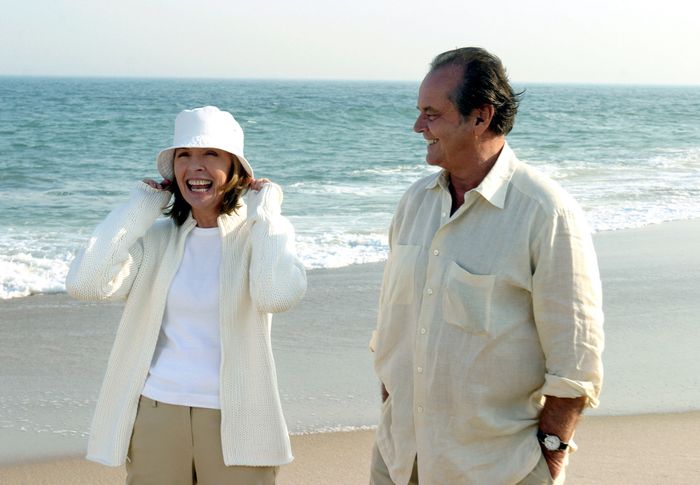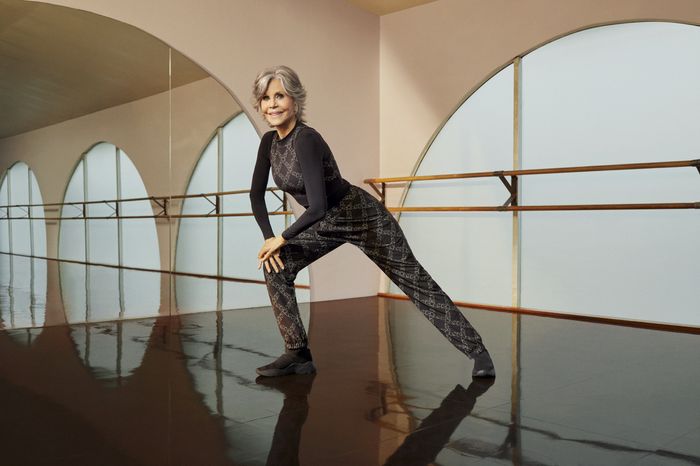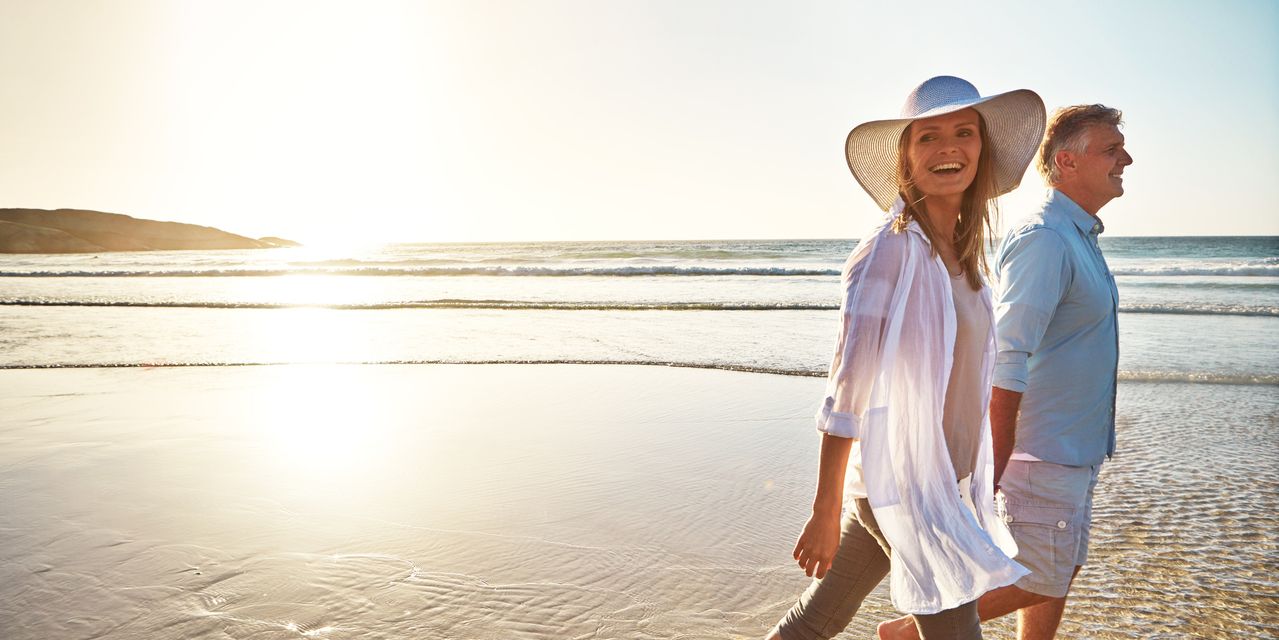It was only three years ago that young millennials and Gen Z coined the phrase “OK, Boomer” as a way to dismiss and label their elders as old-fashioned. In addition, advertisers and product designers have long ignored the needs of older customers.
Flash forward to 2022 as the year younger generations and big retail brands began viewing the age 50+ crowd as fashionable and desirable. It may have something to do with older adults representing an $8.3 trillion economy, according to AARP.
This summer, Pottery Barn, a specialty retailer for casual, comfortable and stylish home furnishings, announced its Accessible Home line of 150 home furniture pieces, finishings and décor designed for inclusivity to help those with physical limitations.

This Italian farmhouse dining table is part of Pottery Barn’s Accessible Home line.
Pottery Barn
“After I visited one of our stores, I found out that the bathroom didn’t contain Pottery Barn furniture as it wasn’t ADA (Americans with Disabilities Act) compliant. I felt like this was a big miss as we are always looking for ways to better serve our customers and allow everyone to take part in our brand,” said Marta Benson, president of Pottery Barn.
The new Accessible Home line includes pivot mirrors (helpful whether standing or sitting, such as in a wheelchair), beautiful yet strongly functional grab bars that add style and safety to dated bathrooms, stylish task lighting options for declining eyesight and more.
Don’t miss: Want to age well? A dog could be the key to better physical — and mental — health.
Accessibility with style
The most popular furniture items have been leather power lift recliners with easy-to-read buttons on the remote for various reclining positions that also feature a lift assist to help with getting in and out of the chair. It also has easy-to-reach side pockets for reading glasses, medications, smartphones and other items that need to be handy but hidden to help with decluttering.
Other favorites are the L-shaped desk and apothecary sink vanity that now accommodate wheelchair height, with the sink also offering reduced depth to ensure you can easily reach the faucet.
“More and more people are starting to age in place…It’s now become our brand’s mission to incorporate accessibility into everything we do,” added Benson.
According to Harvard University’s Joint Center for Housing Studies, half of all homes are headed by someone over age 50 who wants to live longer at home. By 2037, households with someone over age 80 will double to more than 14 million. While most older adults want to age in place — the term used for those who want to stay in their homes — many live in “Peter Pan” homes, meaning homes built for people who will never grow older. In fact, according to the National Association of Homebuilders, nearly half of the homes in the U.S. were built before 1980, and 38% before 1970. Only 1% of 100 million homes in America use any type of universal design to make the home ageless, assistive and accessible.
Incorporating universal design
It is one of the reasons Lowe’s,
LOW,
one of the largest home improvement companies in North America with 2,200 retail stores, launched its Livable Home Services last fall. The new initiative trains in-store salespeople on universal design products and links customers to information and experts for installations and modifications.
When it comes to universal design, these experts are specially trained on ADA compliance for modifications such as no-step or zero-entry showers, grounding the grab bars in baths, adding handrails on both sides for steps and stairs or changing to ramps, etc. While entries, kitchen and bedrooms can all be changed to accommodate aging, the biggest safety risks are in the bathroom where 80% of all falls at home happen.
A 2016 survey among homeowners showed 50% of 75-year-olds are making home modifications, and among those ages 55-70, 3 in 5 said they are making home upgrades after caring for an older loved one. During the pandemic these numbers increased as more people worked from home, cared for older parents at home and realized our home environments may require upgrades and changes for health and safety.
According to Louis Tenenbaum, founder of Homes Renewed Coalition, there are three main reasons older homeowners are not proactively making universal design modifications.
“A lack of understanding what home modifications to purchase; the ability to find an experienced and reliable installer; and having the confidence of a fair price for the right things done well. If we can address these areas, the adoption and market will grow,” said Tenenbaum.
‘Coastal grandmother’ is trending with Gen Z TikTokers
One of the reasons Pottery Barn is so popular is that it has captured that coastal living vibe that translates well into a variety of home design styles such as the popular farmhouse chic (also known as lake house and barndo aka “barn gone condo” style). The coastal living aesthetic includes a sea of whites and blue in comfortable, natural elements for home décor.

Diane Keaton was beach chic in “Something’s Gotta Give” in 2003.
Columbia Pictures/Everett Collection
But it is also a fashion trend where the stylish dress code comprises cool linens, 50 shades of beige and tan along with a spectrum of blue denim, luxe cashmere sweaters and scarves, espadrilles and canvas or woven beach hats that say, “breezy, calm and classically sensual.”
Originally popularized by filmmaker Nancy Meyers, who was in her 50s when she made movies such as “Something’s Gotta Give” (2003) and “It’s Complicated” (2009) with then 50-something actresses Diane Keaton and Meryl Streep, Meyers not only elevated fashion and created enviable home designs with coastal chic flair, the popularity of which she ascribes to the “cozy” feeling of her films, but she also elevated the desirability of women over age 50.
Almost 20 years later, this beach chic vibe has struck a chord with Lex Nicoletta, a 20-something influencer who coined the phrase, “Coastal Grandmother” in her top-trending TikTok videos. Her veneration for Keaton, Streep and Meyers along with her love of the 74-year-old “Barefoot Contessa” cooking goddess Ina Garten has made Nicoletta a media sensation and grabbed the attention of retail brands and millennial celebrities, such as 30-something actress Anne Hathaway, who have posted their homage to the Coastal Grandmother look and lifestyle on social media.
Jane Fonda wants to move you (again)
Even Jane Fonda, the now 84-year-old actress-activist-fitness entrepreneur who told us to “feel the burn” as she ushered in the ’80s aerobics craze, has embraced both Coastal Grandmother and a stylish reinvention of her get fit and fabulous philosophy. She recently starred in a Coastal Grandmother parody video on “The Tonight Show Starring Jimmy Fallon” and announced her collaboration with value-driven clothing retailer, H&M
HNNMY,
a popular brand with Gen Z and millennial fashionistas. Fonda and H&M’s new line is called H&M Move and is positioned not as athleisurewear but “movewear” for all ages.
Check out: Grandparents: Forget everything you ever knew about taking care of babies
In a video to launch the brand, Fonda says, “We should always be trying to move and grow. Being part of this ‘movement for movement’ makes a lot of sense for me because it’s important no matter who you are or where you are, how old or young you are, that you move.”

Jane Fonda, 84, is promoting “movewear” for H&M.
H&M
In just 7-8 years, the oldest millennials will be turning age 50. Today, only 5-10% of marketing budgets in the U.S. are targeting an age 50+ audience, yet this same audience is responsible for more than half of all consumer spending. The ageist viewpoint of marketers is they want a long-term relationship with their customers and do not covet older people who they see as short-term users.
But despite recent reports that life expectancy has slightly declined, lifespans are increasing with people living potentially 30-40 years past age 50 and wielding a lot of spending power in those later years that brands cannot ignore.
Also see: Must be ‘fit and active’ or ‘digital native’: how ageist language keeps older workers out
Cara Sumpton, a millennial generation fashion designer for brands such as Lululemon
LULU,
Aritzia and currently lead designer for the adaptive clothing line for older adults, Joe & Bella, sums it up best, “I think fashion will become ageless as we live longer.”
Sherri Snelling is a corporate gerontologist, author, speaker and consultant in aging and caregiving. She is the host of the “Caregiving Club On Air” podcast.
This article is reprinted by permission from NextAvenue.org, © 2022 Twin Cities Public Television, Inc. All rights reserved.
More from Next Avenue:
